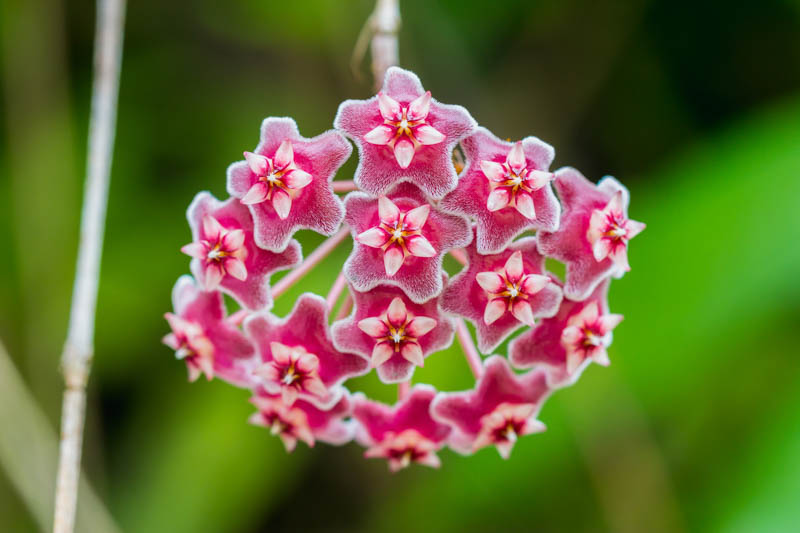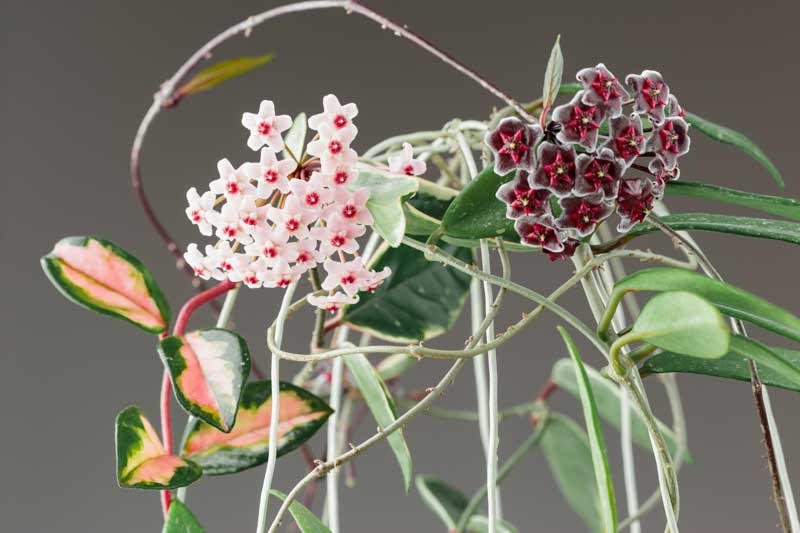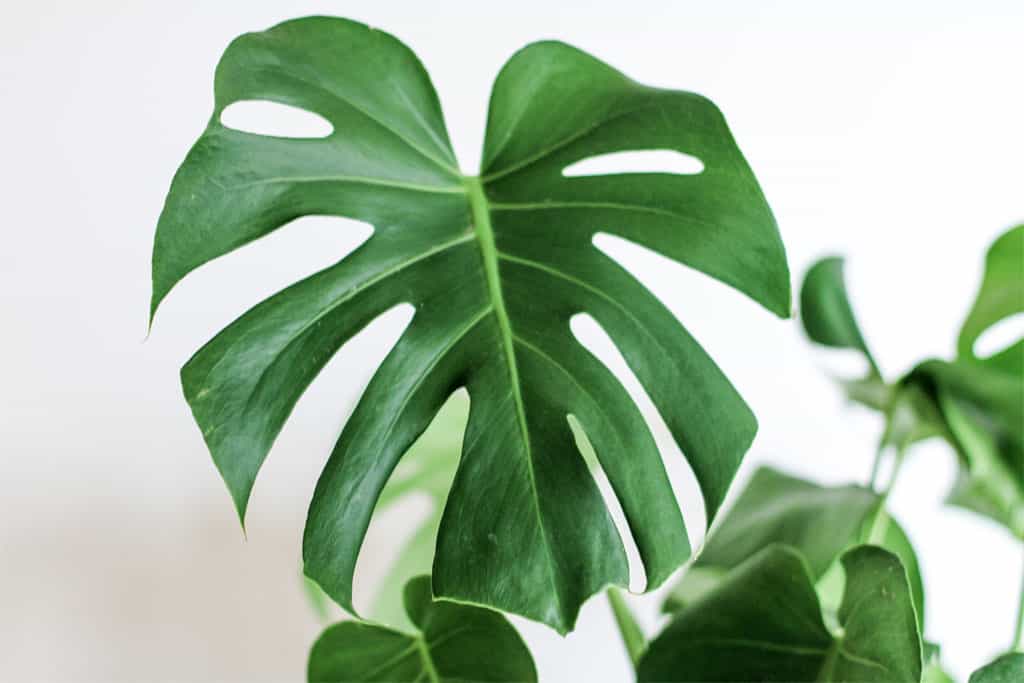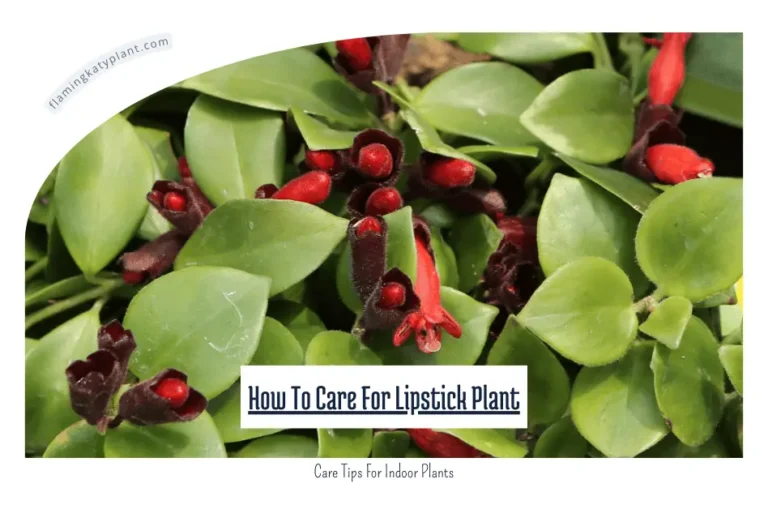How To Care For Hoya (Hoya)
How to Care for Hoya (Wax Plant): A Detailed Guide
Hoya, commonly known as Wax Plant or Porcelain Flower, is a popular houseplant renowned for its thick, waxy leaves and fragrant, star-shaped flowers. Native to tropical Asia and Australia, Hoyas are relatively low-maintenance and can thrive indoors with proper care. Here’s a comprehensive guide to help you care for your Hoya and keep it thriving.
1. Light Requirements
Hoyas prefer bright, indirect light but can also tolerate some direct sunlight. Too much direct sunlight can scorch the leaves, while too little light can hinder flowering and cause leggy growth. Place your Hoya near an east or west-facing window where it can receive filtered light. If you only have access to bright, direct sunlight, use sheer curtains to diffuse the light. Artificial grow lights can also be used to supplement natural light.

2. Watering
Hoyas like their soil to dry out slightly between waterings. Water the plant thoroughly when the top inch of soil feels dry to the touch. Ensure the pot has drainage holes to allow excess water to escape. During the growing season (spring and summer), you may need to water more frequently. Reduce watering in the fall and winter when the plant’s growth slows. Overwatering can lead to root rot, so it’s essential to avoid letting the plant sit in water.
3. Humidity
Hoyas prefer moderate to high humidity levels, ideally between 40-60%. If your home is dry, especially during winter, consider increasing humidity by using a humidifier, placing the plant on a tray filled with water and pebbles, or regularly misting the leaves. Keeping Hoyas in naturally humid areas such as bathrooms can also be beneficial.
4. Temperature
Hoyas thrive in warm temperatures between 60-80°F (16-27°C). They are sensitive to cold drafts and sudden temperature changes. Keep the plant away from windows or doors that may have cool drafts and from heating or air conditioning vents. Hoyas can tolerate cooler temperatures down to 50°F (10°C) but should be protected from frost.
5. Soil and Potting
Hoyas require well-draining soil. A good mix is one part peat moss or coco coir, one part perlite, and one part orchid bark. Repotting should be done every 2-3 years or when the plant becomes root-bound, ideally in the spring. Choose a pot that is only slightly larger than the current one to avoid excess moisture retention.
6. Fertilizing
Feed your Hoya every 4-6 weeks during the growing season with a balanced, water-soluble fertilizer diluted to half strength. High-phosphorus fertilizers can encourage blooming. Avoid fertilizing in the fall and winter months when the plant’s growth slows. Over-fertilizing can lead to a buildup of salts in the soil, which can harm the plant.
7. Pruning
Regular pruning helps maintain the plant’s shape and encourages bushier growth. Use clean, sharp scissors or pruning shears to trim back any leggy or overgrown stems. Pruning also helps improve air circulation around the plant. Avoid cutting the long tendrils, as this is where new growth and flowers will emerge.

8. Propagation
Hoyas can be propagated through stem cuttings. Take a cutting with at least two nodes and a few leaves, and place it in water or a moist soil mix. If rooting in water, change the water every few days to prevent stagnation. Once roots develop, transfer the cutting to a pot with well-draining soil. Keep the new plant in a warm, humid environment until it establishes new growth.
9. Pest and Disease Management
Hoyas can be susceptible to pests like spider mites, aphids, and mealybugs. Regularly inspect the plant for signs of pests, such as webbing, sticky residue, or visible insects. Treat infestations with insecticidal soap, neem oil, or by wiping the leaves with a damp cloth. Proper watering and good air circulation help prevent fungal and bacterial diseases.
10. Special Considerations for Flowering
Hoyas can take a few years to mature and bloom. To encourage flowering:
- Provide plenty of bright, indirect light.
- Avoid moving the plant frequently, as it can disrupt blooming.
- Allow the plant to become slightly root-bound.
- Use a high-phosphorus fertilizer during the blooming season.
Conclusion
Hoyas, with their attractive foliage and fragrant flowers, can be a delightful addition to your indoor garden. By providing the right light, moisture, and environment, you can enjoy the beauty and growth of this plant for years. Regular maintenance, including proper watering, fertilizing, and pruning, will ensure your Hoya remains healthy and vibrant. Whether you are a seasoned gardener or a beginner, Hoyas offer a rewarding and visually captivating plant care experience.

What is a Hoya plant?
How often should I water my Hoya plant?
What kind of light does a Hoya plant need?
How do I fertilize my Hoya plant?
How do I prune my Hoya plant?
Can I propagate my Hoya plant?
Do Hoya plants require a lot of humidity?
How do I repot my Hoya plant?
What are common pests and diseases that affect Hoya plants?
How can I encourage my Hoya plant to bloom?






